Haut Glacier d'ArollaLocation: Walliser Alpen; orientation: north. The Haut Glacier d’Arolla is a small valley glacier approximately 3.5 km long, fed by two main flow units. It has a relatively low gradient and has a long record of continuous recession, a behaviour which it maintained even in the 1970s & 1980s, when its neighbours (Bas Glacier d’Arolla, Glacier de Tsijiore Nouve) were advancing. At some time in the mid-20th century, the glacier still joined the Bas Glacier, and during the Little Ice Age of 1750-1850, the combined glacier tongue extended almost as far as the site of Arolla Village. Now, the two glaciers are separated by about 2 km. Haut Glacier d'Arolla is one of the most intensively studied glaciers in the Alps, notably from the point of view of glacier hydrology, mass and energy balance, structure and debris transport. Monitoring continues to this day. |
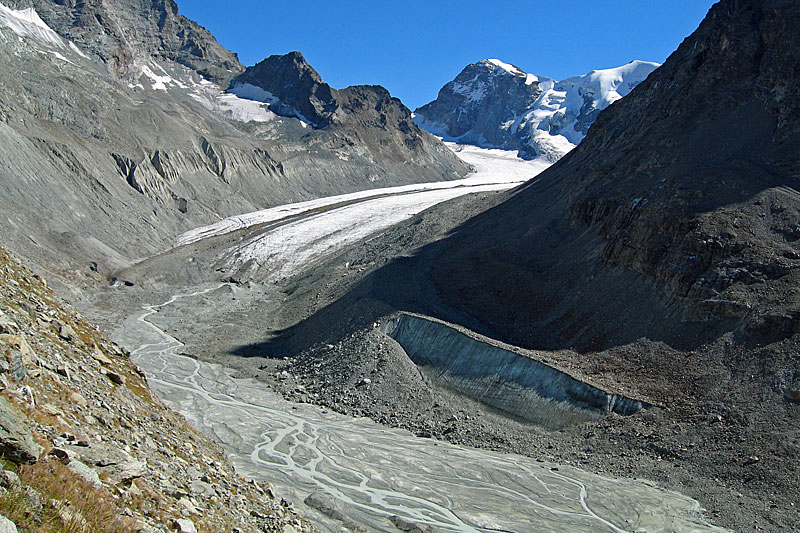 View from the NW. The Little Ice Age moraine (upper left) now stands 150 m above the glacier surface. A stream emerges and spreads out across a braid-plain. A large area of debris-covered dead ice (lower middle/right), with a scarp of clean ice is still connected to the main glacier. |  Telephoto of the snout area from the same position as in the previous photo showing medial moraine, glacier portal, hummocky moraine and dead ice. | 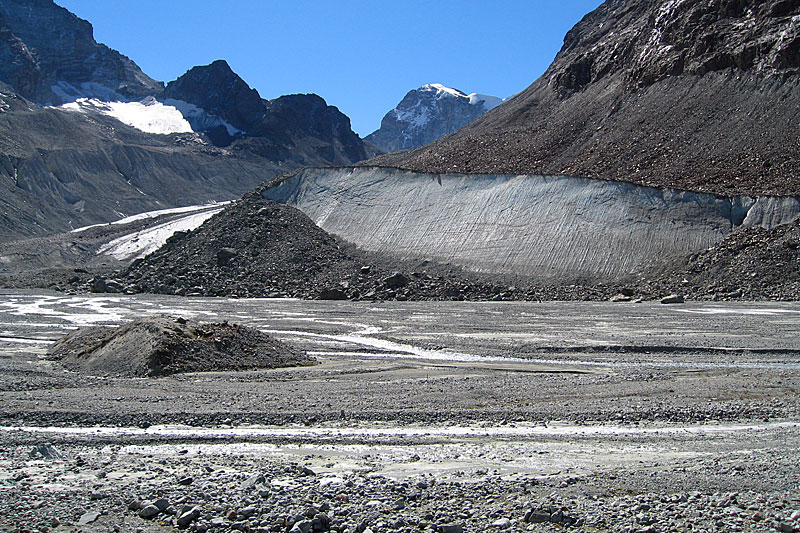 Dead ice area on true left side of glacier. The ice is debris-covered, except where the braided river in the foreground has undercut the ice. | 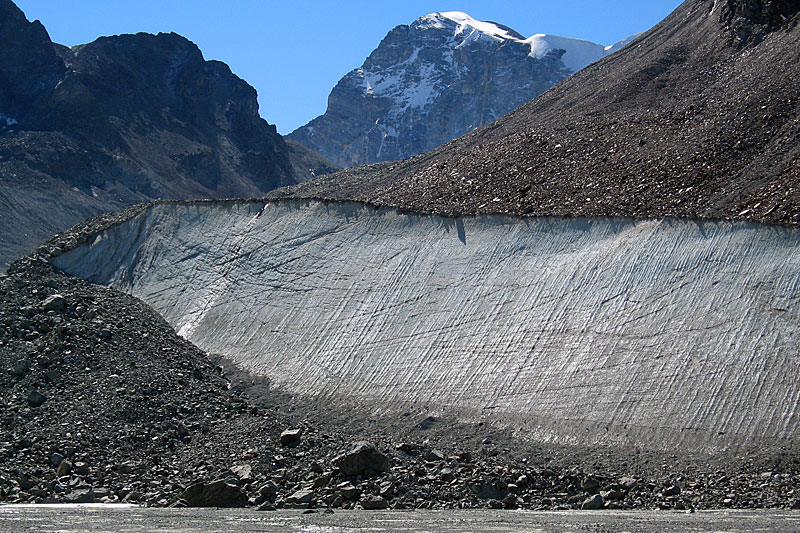 Telephoto of dead ice area at left margin. Note the curving structures. These are the traces of former crevasses and were originally vertical. They have been deformed by internal deformation, illustrating the fact that ice at the surface flows faster than at the bed. |
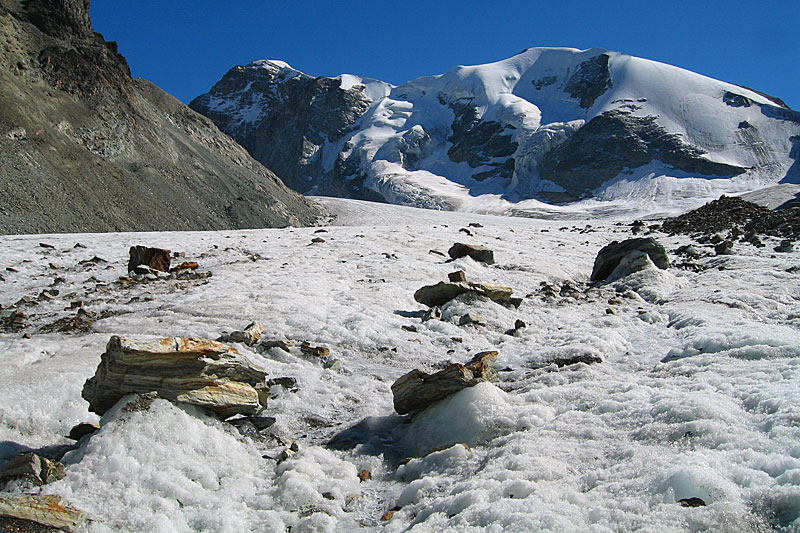 Looking up the right hand (E) flow unit of the glacier, showing scattered boulders. In the background is Mont Brulé (3578 m) with discontinuous drape of ice. This used to a major source of ice to the glacier, but is now relatively inactive. Compare with the next image. | 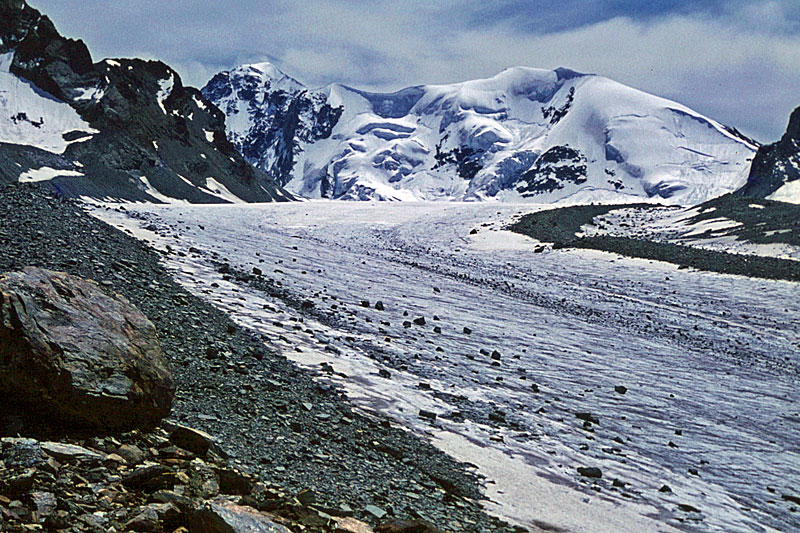 A similar view taken from the nearby medial moraine in summer 1974. Note how there is much more ice on Mont Brulé and that it is heavily crevassed, indicating that the ice was highly dynamic. | 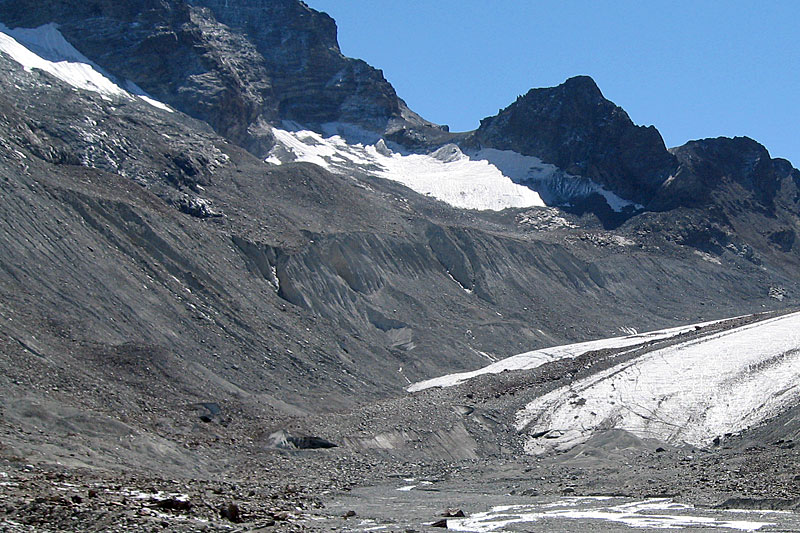 Small remnants of a once single glacier, the Glacier de Bouquetins, are perched above the Little Ice Age moraine and snout of the Haut Glacier. Compare with the next image. | 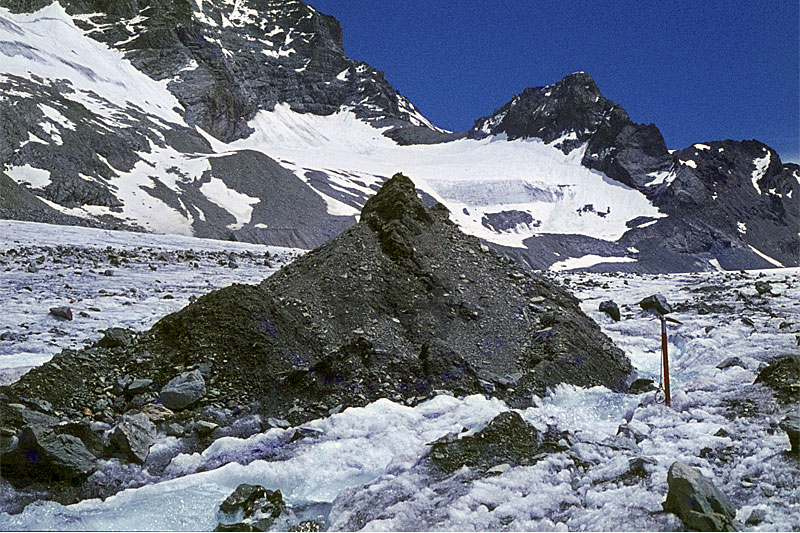 Beyond the dirt cone in this 1974 photograph, a much more extensive Glacier de Bouquetins can be seen. |
 A group of MSc students from Aberystwyth University, Wales, are setting up a small automatic meteorological station under the direction of Dr Alun Hubbard. This is the first stage: drilling a hole with a small motorised drill to insert a stake. | 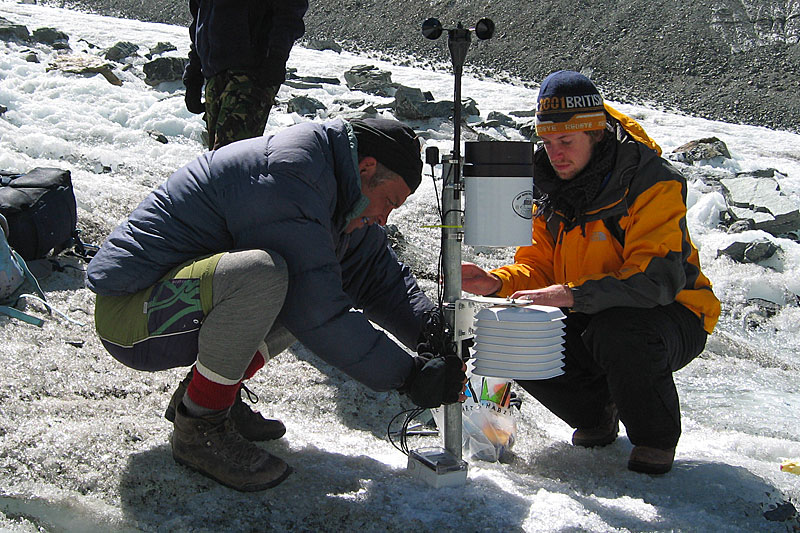 Once the stake is inserted various meteorological instruments are attached to record wind speed, temperature, humidity and radiation. |  Having set the instruments on the pole, a data-logger is attached for monitoring changes over periods of days, weeks or even a year. Having stood around for a few hours in a cold katabatic wind, the students are experiencing the chilling effect of working on a glacier. |  Angular rockfall debris emerging at the glacier surface in the ablation area, having taken an englacial path up to this point. |
 An unusual two-legged glacier table, where the boulder has partially protected the ice from ablation. At the upper right is rapidly receding Glacier de la Mitre with the peak of Mitre de l’Eveque (3654 m) above. The small conical peak in the background is La Vierge (3133 m). | 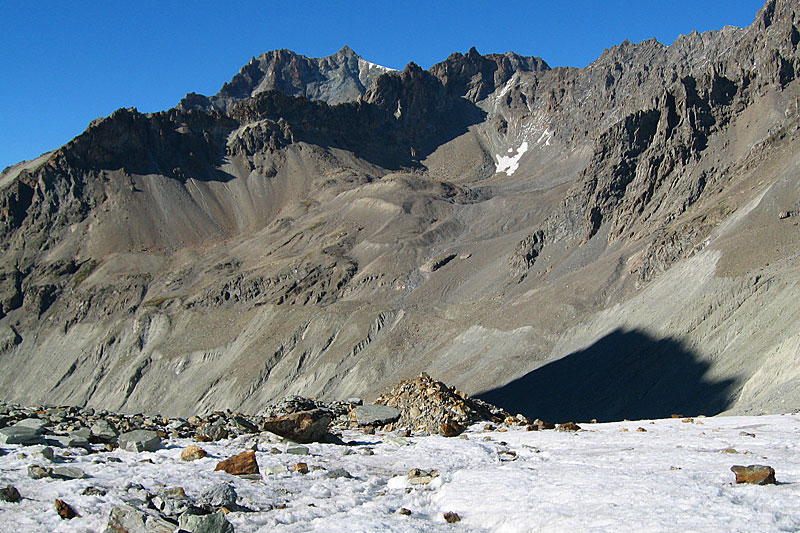 High up on the slope above the snout and Little Ice Age moraine and trim-line of the Haut Glacier is a rock glacier, fed by rockfall from the ridge, Crete du Plan, above. | 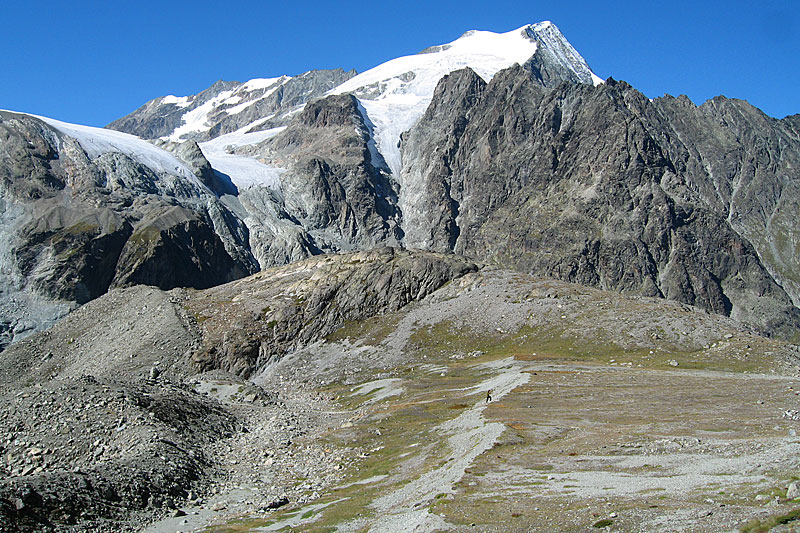 The path from Arolla village skirts the far side of this flat terrace (a kame terrace) and crosses the Little Ice Age moraine on the left before dropping down to the braid-plain. The moraine appears to be younger than the terrace, as a marginal meltwater stream (long since dry) once incised the latter, creating a small scarp. |  The snout of the glacier with medial moraines on either side of the glacier portal. Note how these moraines are much taller than the clean ice. This is because even a relatively thin layer of debris (1 metre as here) retards ablation significantly. In the foreground, the small stream is still frozen in this mid-morning photograph. |
| Except where otherwise stated for comparison purposes, these photographs were taken in September 2007; Michael Hambrey |